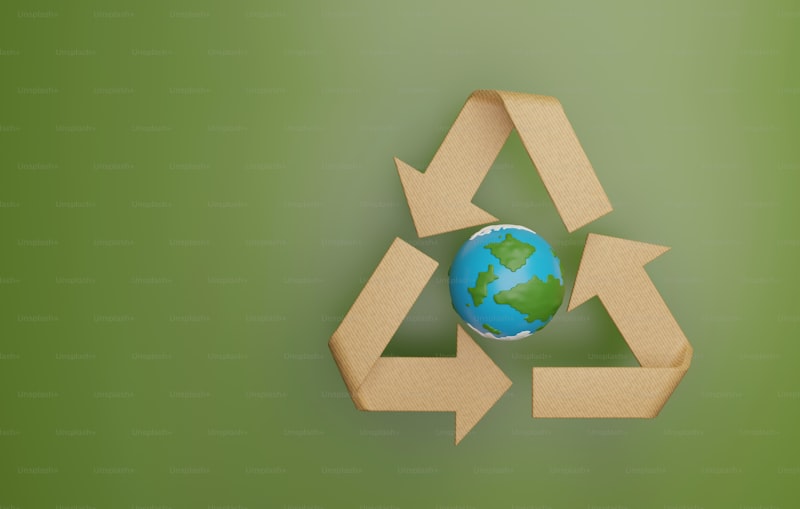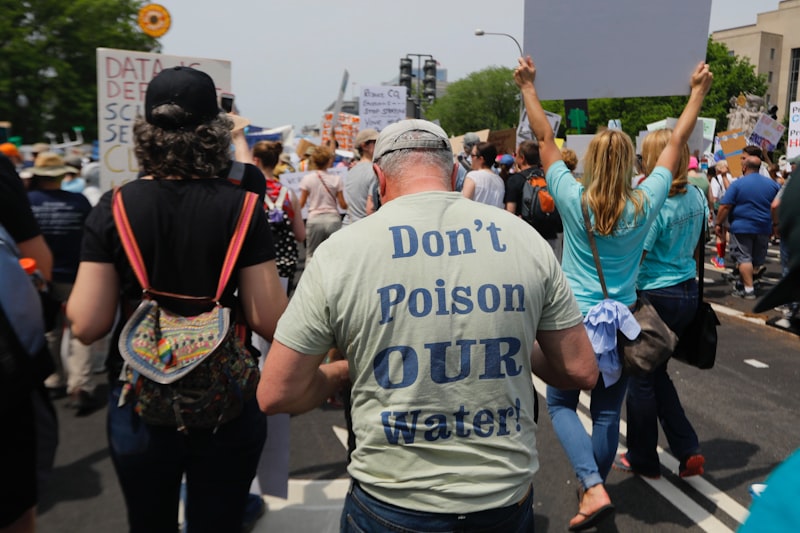At its core, environmental sustainability is about ensuring that we meet our present needs without compromising the ability of future generations to meet their own needs. It’s like tending to a garden: you nurture the soil, plant seeds, and ensure there’s enough water and sunlight so that it flourishes not just now, but for years to come.
Consider the impact of our daily habits. The food we eat, the clothes we wear, and even how we travel—all of these contribute to our environmental footprint. By choosing sustainably sourced products and reducing waste, we can lessen our impact on ecosystems and natural resources. It’s about making choices that support the health of our planet and all the life it sustains.
One of the key pillars of environmental sustainability is conservation. This involves protecting biodiversity, preserving habitats, and using resources wisely. Imagine a delicate ecosystem as a finely tuned orchestra: each species plays a crucial role, and if one instrument is out of tune or missing, the harmony is disrupted.
But why should we care? Well, the consequences of environmental degradation are far-reaching. Climate change, loss of biodiversity, pollution—all these issues threaten not only ecosystems but also human health and livelihoods. Environmental sustainability offers a pathway to mitigate these risks and build resilience against future challenges.
Ultimately, embracing environmental sustainability isn’t just about sacrifice; it’s an investment in a better future. It’s about innovating new technologies, adopting greener practices, and fostering a mindset that values long-term prosperity over short-term gain. Together, we can create a world where our actions today ensure a thriving planet for generations to come.
From Crisis to Commitment: How Environmental Sustainability is Shaping Global Agendas
The world is at a critical juncture where environmental sustainability has transcended from a crisis to a pivotal commitment shaping global agendas. As our planet faces unprecedented challenges like climate change, biodiversity loss, and resource depletion, governments, organizations, and individuals are increasingly recognizing the urgency of taking concerted action.
Environmental sustainability encompasses a range of practices and policies aimed at preserving the planet’s ecological balance and ensuring that future generations can thrive. It’s not just about protecting the environment; it’s about fostering a harmonious relationship between human activities and the Earth’s natural systems.
In recent years, the discourse on sustainability has evolved significantly. It’s no longer a niche concern championed by environmental activists but has become a mainstream agenda item for policymakers worldwide. The Paris Agreement, signed by nearly 200 countries, stands as a testament to the global consensus on the need for collective action to mitigate climate change.
Businesses are also playing a crucial role in driving sustainability forward. Many corporations are integrating environmental considerations into their strategies, not just as a regulatory requirement but as a core component of their corporate responsibility. From adopting renewable energy sources to implementing green supply chain practices, companies are realizing that sustainability is not just good for the planet but also for their bottom line.
Moreover, technological advancements are catalyzing the transition towards sustainability. Innovations in clean energy, waste management, and agriculture are offering practical solutions to reduce our environmental footprint while promoting economic growth. The shift towards electric vehicles, the development of sustainable building materials, and the proliferation of circular economy models are reshaping industries and consumer behavior alike.
At the heart of this paradigm shift is a growing recognition that environmental sustainability is not an option but a necessity. It requires a commitment to change our lifestyles, policies, and economic systems to ensure a sustainable future for all. As individuals, we can contribute by making conscious choices in our daily lives, supporting sustainable businesses, and advocating for policies that prioritize environmental protection.
The journey from crisis to commitment regarding environmental sustainability reflects a transformative shift in global consciousness. By embracing sustainability as a guiding principle, we can forge a path towards a resilient and prosperous future for generations to come.
Beyond Greenwashing: Unveiling Corporate Accountability in Environmental Sustainability
Imagine this: You walk into a store and see a product labeled “eco-friendly” or “green.” It looks appealing, with earthy tones and promises of reducing carbon footprints. You might feel good about choosing it, thinking you’re supporting a company that cares about the planet. But what if that label is just a facade? What if behind the scenes, the company engages in practices that harm the environment?
This is where corporate accountability comes into play. Beyond the superficial claims of greenwashing, true accountability means transparency and genuine commitment to environmental sustainability. It’s about companies taking real steps to minimize their environmental impact, from sourcing materials responsibly to reducing energy consumption and waste. It’s not just about what they say but what they do.
Consumers today are more informed and conscientious than ever. They want to support brands that align with their values, especially when it comes to the environment. This shift in consumer behavior is pushing companies to be more accountable and authentic in their sustainability efforts.
Picture a company that not only claims to care about the environment but also backs it up with concrete actions. They invest in renewable energy, they implement sustainable packaging solutions, and they actively engage in community initiatives to protect natural habitats. These are the companies that are paving the way towards a genuinely sustainable future.

As consumers, we have the power to demand transparency and accountability from the brands we support. By asking the right questions and digging deeper into companies’ sustainability practices, we can unveil the truth behind the greenwashing facade and encourage genuine change. Together, we can hold corporations accountable and drive meaningful progress towards a more sustainable world.
Climate Action 2.0: Innovations Driving the Next Wave of Environmental Sustainability
Have you ever wondered how technology is shaping the future of environmental sustainability? In the era of Climate Action 2.0, innovative solutions are emerging as game-changers in the fight against climate change. These advancements go beyond traditional methods, offering new hope and possibilities for a greener planet.
One of the most exciting innovations is in renewable energy. Imagine cities powered entirely by sunlight, wind, and water – no greenhouse gases, just clean, limitless energy. Solar panels and wind turbines are no longer just symbols of sustainability; they are practical solutions driving real change. Companies and governments alike are investing heavily in these technologies, paving the way for a future where fossil fuels are a thing of the past.
But it’s not just about energy production; it’s also about energy efficiency. Buildings are being designed with smart technologies that reduce energy consumption without sacrificing comfort. From smart thermostats that learn your habits to energy-efficient appliances that automatically adjust usage, every small improvement adds up to significant environmental benefits.
Transportation is another frontier in Climate Action 2.0. Electric vehicles (EVs) are becoming more accessible and affordable, offering a clean alternative to traditional gas-powered cars. With advancements in battery technology, EVs now have longer ranges and shorter charging times, making them practical for everyday use. Imagine a world where every car on the road produces zero emissions – that’s the future we’re heading towards.
In agriculture, sustainable practices are revolutionizing food production. Vertical farming and hydroponics allow crops to be grown in urban settings, reducing the need for vast expanses of farmland and minimizing transportation emissions. Innovations in soil management and crop genetics are also increasing yields while conserving resources, ensuring that we can feed a growing population without harming the planet.
The Economic Ripple Effect: How Environmental Sustainability Is Reshaping Industries
Imagine a world where every decision made by a company has a ripple effect, influencing not only its immediate surroundings but global markets. That’s the power of environmental sustainability. By adopting sustainable practices, industries are not only reducing their carbon footprint but also gaining a competitive edge. Consumers, increasingly aware and conscientious, are favoring brands that demonstrate commitment to sustainable practices. This shift isn’t just a trend—it’s becoming a prerequisite for staying relevant in the marketplace.
Industries across the board are feeling this transformation. Take the automotive sector, for instance. Electric vehicles (EVs) aren’t just a solution to urban pollution; they’re revolutionizing how we perceive transportation. Companies investing in EV technology aren’t just meeting regulatory standards; they’re spearheading a movement towards cleaner, greener mobility solutions.
Similarly, in agriculture, sustainable farming practices aren’t just about organic produce; they’re ensuring food security for future generations. By minimizing chemical usage and optimizing land management, farmers aren’t just protecting the environment; they’re safeguarding their livelihoods against the unpredictability of climate change.

Even the tech industry, often seen as a major contributor to carbon emissions, is stepping up. Renewable energy-powered data centers, eco-friendly packaging, and energy-efficient devices are becoming benchmarks of responsible corporate behavior. Companies like Google and Apple are leading the charge, proving that innovation and sustainability can go hand in hand.
Ultimately, the economic ripple effect of environmental sustainability isn’t confined to reducing costs or complying with regulations. It’s about fostering resilience, inspiring innovation, and creating a future where businesses thrive in harmony with the planet. As industries continue to embrace sustainability, the ripple effect will continue to reshape economies, industries, and the way we live and work.
From Policies to Practices: Communities Leading the Charge in Environmental Sustainability
Imagine a neighborhood where every household not only recycles but actively reduces its waste footprint. It’s like each family has its own little recycling center, making sure every bottle, can, and piece of paper gets a second chance. This isn’t just about bins and sorting; it’s a mindset, a commitment to lessening our impact on the planet.
These communities aren’t just talking the talk; they’re walking the walk. Take rooftop gardens, for example. In urban areas where space is at a premium, innovative thinkers have turned barren rooftops into lush green spaces. It’s not just about aesthetics; it’s about growing fresh produce locally, cutting down on transport emissions, and fostering a sense of community pride.
But sustainability isn’t all about what we can see. It’s also about what’s happening behind the scenes. Think about renewable energy initiatives. Communities are banding together to invest in solar, wind, and hydro power. They’re saying goodbye to fossil fuels and embracing clean, renewable sources of energy. It’s like trading in your old gas-guzzler for a sleek, efficient electric car – better for the environment and better for the future.
Education is another cornerstone of community-led sustainability efforts. Schools, local organizations, and even businesses are teaching the next generation about the importance of environmental stewardship. It’s like planting seeds of knowledge that will grow into a forest of change-makers, each armed with the tools to protect our planet.
So, from policies to practices, these communities are proving that small actions can lead to big results. They’re showing us that by working together and thinking globally while acting locally, we can make a world of difference. Environmental sustainability isn’t just a buzzword anymore; it’s a way of life, one neighborhood, one town, one city at a time.
Measuring Up: Assessing the True Impact of Individual Choices on Environmental Sustainability
Picture this: You’re standing in front of a grocery aisle, trying to decide between a pack of conventional produce and organic vegetables. Which one do you choose? While it might seem like a simple decision, opting for organic can significantly reduce the use of synthetic pesticides and support sustainable farming practices. This small switch not only benefits your health but also contributes to a healthier environment.
Now, think about your daily commute. Do you drive alone or carpool? Each car on the road emits carbon dioxide and other pollutants. Carpooling or using public transportation can cut down on emissions, easing the strain on our atmosphere and reducing air pollution in our cities. It’s a choice that adds up—one less car means cleaner air and a lighter carbon footprint.
Beyond transportation and food choices, consider the products you use at home. From cleaning supplies to personal care items, every purchase you make has environmental implications. Opting for eco-friendly products that are biodegradable or use recycled materials can minimize waste and conserve natural resources. It’s a small step that aligns with a larger goal: sustainable living for a healthier planet.
Even our habits around energy consumption matter. Turning off lights when leaving a room, unplugging electronics when not in use, and investing in energy-efficient appliances are all ways to reduce our carbon footprint. These actions not only save money on utility bills but also reduce the demand for fossil fuels, promoting a cleaner, greener future for generations to come.
Frequently Asked Questions
What are the major challenges to achieving environmental sustainability
This FAQ addresses the major challenges hindering environmental sustainability. It focuses on identifying key obstacles such as resource depletion, pollution, climate change impacts, and societal inertia. The content aims to provide a clear understanding of the primary hurdles that must be overcome to achieve lasting environmental sustainability.
How does environmental sustainability affect our daily lives
Learn how environmental sustainability impacts daily life, influencing choices in energy use, consumption habits, and environmental stewardship.
What are the key benefits of practicing environmental sustainability
Discover the advantages of adopting environmental sustainability practices. Learn how it promotes resource conservation, reduces ecological impact, enhances public health, and supports long-term economic viability.
What is environmental sustainability and why is it important
Environmental sustainability refers to responsible interaction with the environment to avoid depletion or degradation of natural resources and allow for long-term environmental quality. It’s crucial because it ensures that future generations have the resources they need to live and thrive.
How can individuals and businesses contribute to environmental sustainability
Learn how individuals and businesses can promote environmental sustainability through practices such as reducing waste, conserving energy, adopting renewable resources, supporting eco-friendly products, and engaging in community initiatives.


